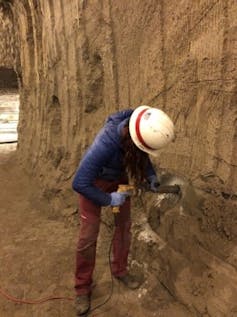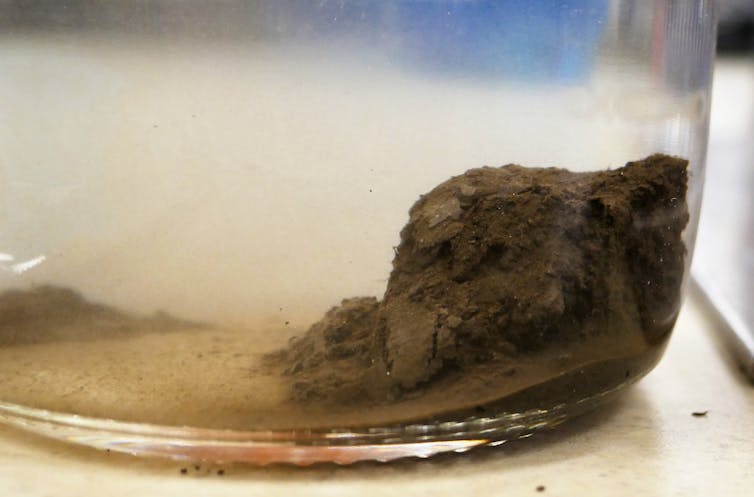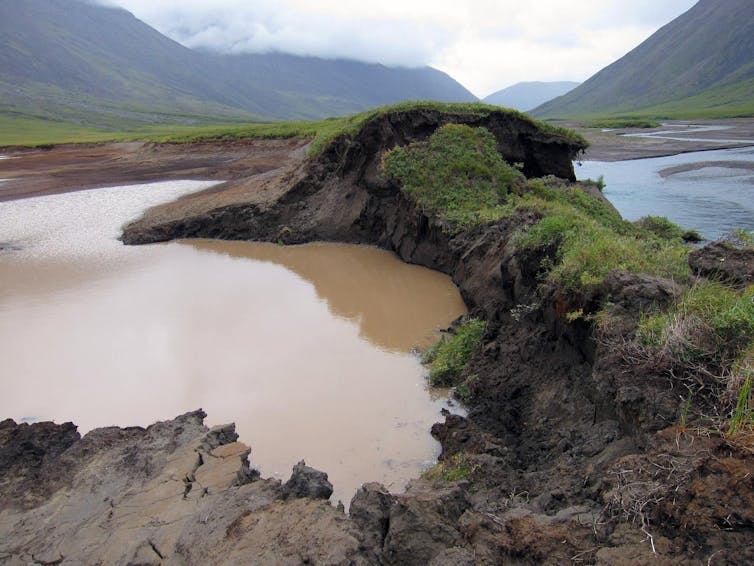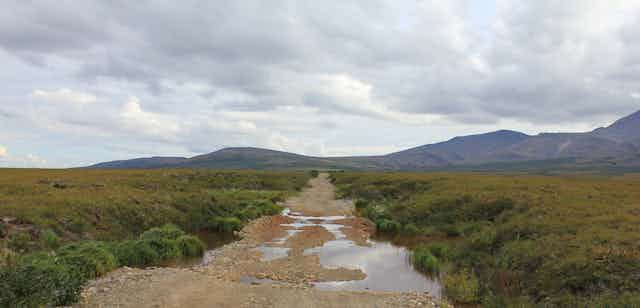The Research Brief is a short take about interesting academic work.
The big idea
Permafrost – frozen soil in the far north – is thawing, releasing greenhouse gases and long-lost microbes. But one thing that scientists have not studied extensively is whether permafrost contains certain kinds of particles that could affect clouds and weather.
As atmospheric scientists, we found in a 2021 study that thawing permafrost contains lots of microscopic ice-nucleating particles. These particles make it easier for water droplets to freeze; and if the ones in permafrost get airborne, they could affect Arctic clouds.

In the summer of 2018, one of us, Jessie Creamean, went to Fairbanks, Alaska, and collected samples of permafrost from a research tunnel deep underground. These samples ranged from 18,000 to 30,000 years old, and our team tested them to see how many ice-nucleating particles are hiding in permafrost.
It turns out permafrost contains a ton of them – up to 100 million highly active individual particles per gram of mostly dead microbes and pieces of plants. This density is on par with what is found in fertile soils, which are some of the most concentrated sources of ice-nucleating particles on Earth. Everywhere in the world, ice-nucleating particles typically play a major role in cloud behavior, and the strength of that effect is still being studied.

Why it matters
No one yet knows whether ice-nucleating particles from permafrost are getting into the atmosphere and affecting clouds. But the theory of how ice-nucleating particles change clouds is understood.
Clouds are made up of billions of tiny water droplets or ice crystals, often a mix of both. A cloud is like a forest of trees: All water droplets of the cloud require a seed – a tiny aerosol particle – to form and grow on. Almost any little speck of material from the land or the ocean can be the seed of a liquid cloud droplet. Because of their unique ability to line up water molecules into an icelike grid, they help supercooled liquid in a cloud to freeze at warmer temperatures.
Ice-nucleating particles are extremely good at forming small ice crystals – a rare skill found in less than 1 in a million of all the particles floating around in the air. Ice-nucleating particles can be mineral dust from deserts, specks of soil from farm fields or – like what we found in the permafrost – bacteria and bits of biological material from oceans or plants.
The ability to easily form ice has big consequences for clouds and weather.
Most of the time, airborne water droplets need to freeze before they can fall to the ground as snow or rain. Ice-nucleating particles allow cloud ice to form at warmer air temperatures than normal, up to around 28 degrees Fahrenheit. Without these particles, a water droplet can supercool to about negative 36 F before freezing. When ice-nucleating particles are in a cloud, water droplets freeze more easily. This can cause the cloud to rain or snow and disappear earlier, and reflect less sunlight.

What still isn’t known
Our work found there are a lot of these ice-nucleating particles in thawing permafrost, which is important because permafrost covers 24% of the exposed land surface in the Northern Hemisphere. The question now is whether these particles are getting into the atmosphere or not. No other researchers that we’re aware of have looked at permafrost’s effect on cloud formation, or the mechanisms by which ice-nucleating particles from permafrost become airborne.
We hypothesize that ice-nucleating particles from thawing permafrost could get into lakes and rivers, make their way to coastal Arctic Ocean waters and spread over large areas. Then, winds could eject these ice-nucleating particles into the air, where they could enhance the freezing of clouds and affect weather.
There are still many unknowns and a lot of work to do.
What’s next
We are teaming up with colleagues from the Cold Regions Research and Engineering Laboratory in Fairbanks and the National Center for Atmospheric Research in Boulder, Colorado, to set out for a six-week expedition to the Alaskan Arctic tundra. We will collect hundreds of samples of permafrost, lake water, river water, coastal ocean water and air samples to see whether ice-nucleating particles from permafrost are present, and in what amounts. Our goal is to use these findings in models to predict how thawing permafrost could alter the region’s clouds.

